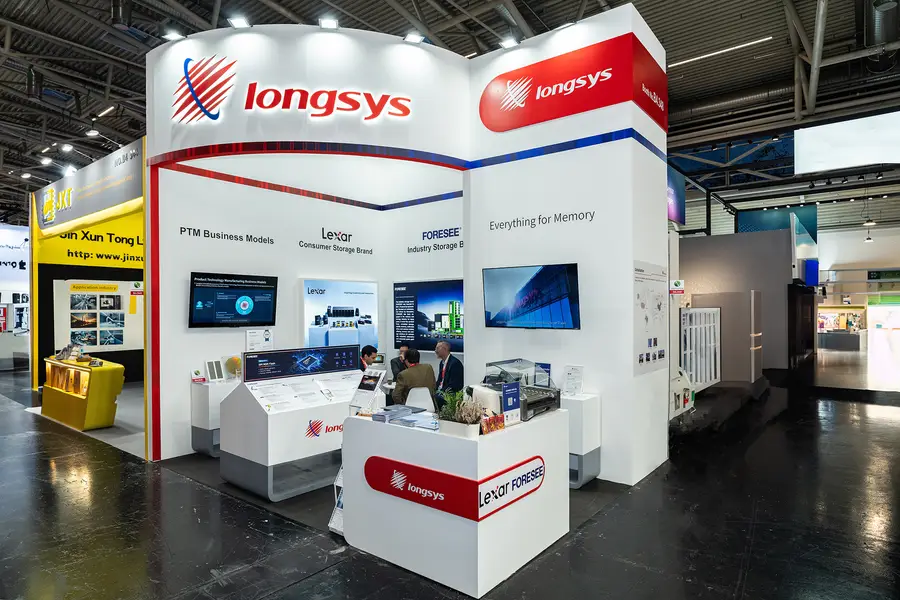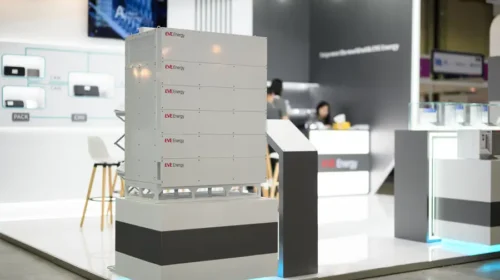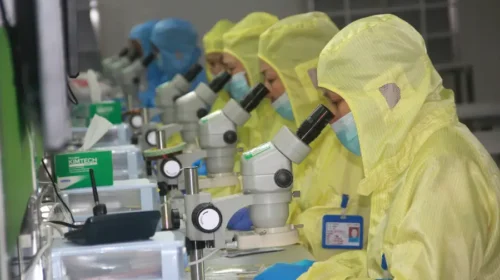Longsys nears Hong Kong listing with key regulatory green light

The maker of memory devices has been cleared for a second IPO in Hong Kong to complement its current Shenzhen listing
Key Takeaways:
- Longsys looks like a relatively safe bet as it nears a planned Hong Kong IPO due to its low-tech positioning in China’s memory product sector
- The company’s revenue growth improved notably in the second quarter after weakness at the start of the year, as global memory prices stabilized and began to rise
By Doug Young
As Chinese semiconductor companies go, Shenzhen Longsys Electronics Co. Ltd. (301308.SZ) looks relatively well positioned to avoid the kinds of geopolitics that are tripping up many of the nation’s top players. That could be a major attraction for potential international investors as the major maker of memory devices prepares to list in Hong Kong.
That IPO took a big step forward last Wednesday, when China’s securities regulator formally registered the company’s Hong Kong listing plan, paving the way for it to move ahead. Longsys listed on Shenzhen’s Nasdaq-style ChiNext board in 2022, and filed to make a second listing in Hong Kong back in March. That application is part of a recent wave of Chinese companies listed on domestic markets in Shenzhen and Shanghai making second listings in Hong Kong to raise their global profiles and attract more international investors.
Unfortunately for Longsys, its Hong Kong listing application reached its six-month expiration deadline just days after the China Securities Regulatory Commission (CSRC) approved the IPO. That green light from China’s securities regulator has been required since 2023, and was probably a key factor why the Hong Kong IPO plan wasn’t moving forward.
Having finally received the CSRC’s approval, Longsys can finally go ahead with the plan, and we would expect to see it make an updated filing in the next month. In this case, the delay has worked to the company’s advantage because the memory market where Longsys operates has improved markedly in recent months after a weak period that began last year and extended through the first quarter of 2025.
With all that background in mind, we’ll return to the point we raised earlier, namely, why this listing looks less risky than many of the other Chinese semiconductor companies raising funds in the capital market these days. Put simply, Longsys isn’t really a chip maker, but instead is a leading supplier of the many types of modules and consumer devices like USB drives that incorporate memory chips, mostly of the DRAM and NAND type.
That means the company is relatively low-tech in the memory chip chain, which shows up in its gross margins that are notably lower than actual memory chip makers like U.S.-based Micron (MU.US) and South Korea’s SK Hynix (000660.KS), as well as Chinese up-and-comers Yangtze Memory Technologies and ChangXin Memory Technologies.
Longsys buys its memory chips from other suppliers like Micron, meaning it’s unlikely to face the type of technology and investment sanctions that the U.S. has previously placed on both Yangtze Memory and ChangXin. But that also means the company has relatively less proprietary technology, resulting in its lower margins.
The company sells to both consumers and other businesses under the Foresee, Lexar International and Zilia brands. Its gross margin in the first half of this year was just 13.28%, compared with much higher figures of about 37% for Micron, and an even higher 54% for SK Hynix.
Chip-making aspirations
Despite its relatively low-tech positioning in the memory market, Longsys does appear to have bigger aspirations in making its own chips. Those aspirations were apparent in 2023 when the company announced its plan to acquire 70% of a memory chip packaging plant in the city of Suzhou from Taiwanese powerhouse Powertech Technology (6239.TW).
In its announcement of the deal, Longsys pointed out that it has already launched its own self-developed SLC NAND flash chip, though that appears to be an insignificant revenue source for the company. But chip packaging is an important part of the process of original chip design and manufacturing, and could move the company towards an eventual goal of becoming a major domestic memory chip manufacturer.
For the time being, most of its revenue comes from embedded memory storage products, which are used in devices like PCs and mobile phones. Such products accounted for about half of its revenue last year, with solid state drives accounting for nearly a quarter and mobile storage about 20%. The rest came from memory modules.
Here, we should point out that a big risk for Longsys could be the rapid rise of AI and cloud computing in the last few years, which is rapidly moving memory capacity needs away from individual computing devices like PCs and smartphones and on to the cloud. That trend could ultimately undermine the part of Longsys’ business that goes to consumer-facing products, though part of that would be offset by higher demand from business clients like cloud computing center operators.
Longsys’ business has been a bit volatile in the last two years due to the highly cyclical nature of the memory industry. The company’s revenue rose 73% last year to 17.5 billion yuan ($2.46 billion) from just 10.1 billion yuan in 2023, accelerating from 22% growth the previous year. But then the growth slowed sharply in the first half of this year to just 12.8%, reaching 10.2 billion yuan from 9.04 billion yuan in the year-ago period.
The culprit behind the slowdown was the usual suspect, namely oversupply, which caused memory prices to sag in the second half of last year and into the start of 2025. But that slump began to turn around in the second quarter as companies cleared out inventory, and Longsys pointed out its second-quarter revenue of 5.94 billion yuan was up 40% sequentially from the first quarter, setting a new quarterly record.
We should also point out that Longsys’ foreign business is far more profitable than its China business, which is pretty common for many products in various high-tech supply chains. Its gross margin for products sold outside China, which make up about 70% of its total, stood at 15.02% in the first half of this year, compared with just 8.37% for products sold in China.
On the bottom line, the company reported its profit plunged 98% to just 14.8 million yuan in the first half of the year from 594 million yuan a year earlier due to the oversupply issues. But here again, it also noted that its second-quarter profit of 234 million yuan, excluding one-time items, was roughly triple the first-quarter profit on the same basis.
From an investor perspective, the bottom line for this company seems broadly positive. Its status as a relatively low-tech player in the memory space should protect it from geopolitics, though that could change as it tries to edge into actual memory chip production. Meantime, strong investor appetite for Chinese chip plays, combined with a rebound in the memory chip market, could also work to its advantage.
To subscribe to Bamboo Works weekly free newsletter, click here






